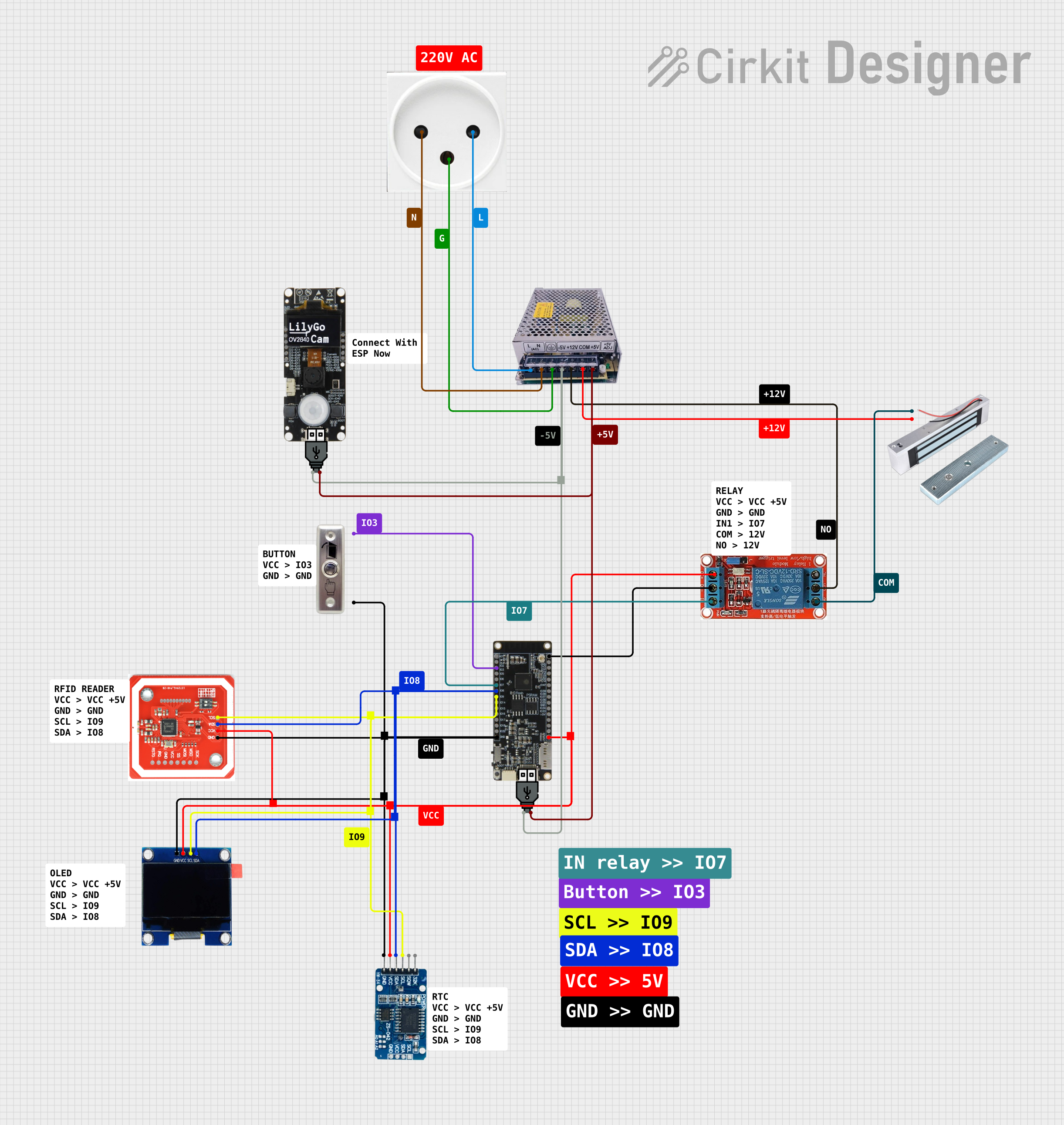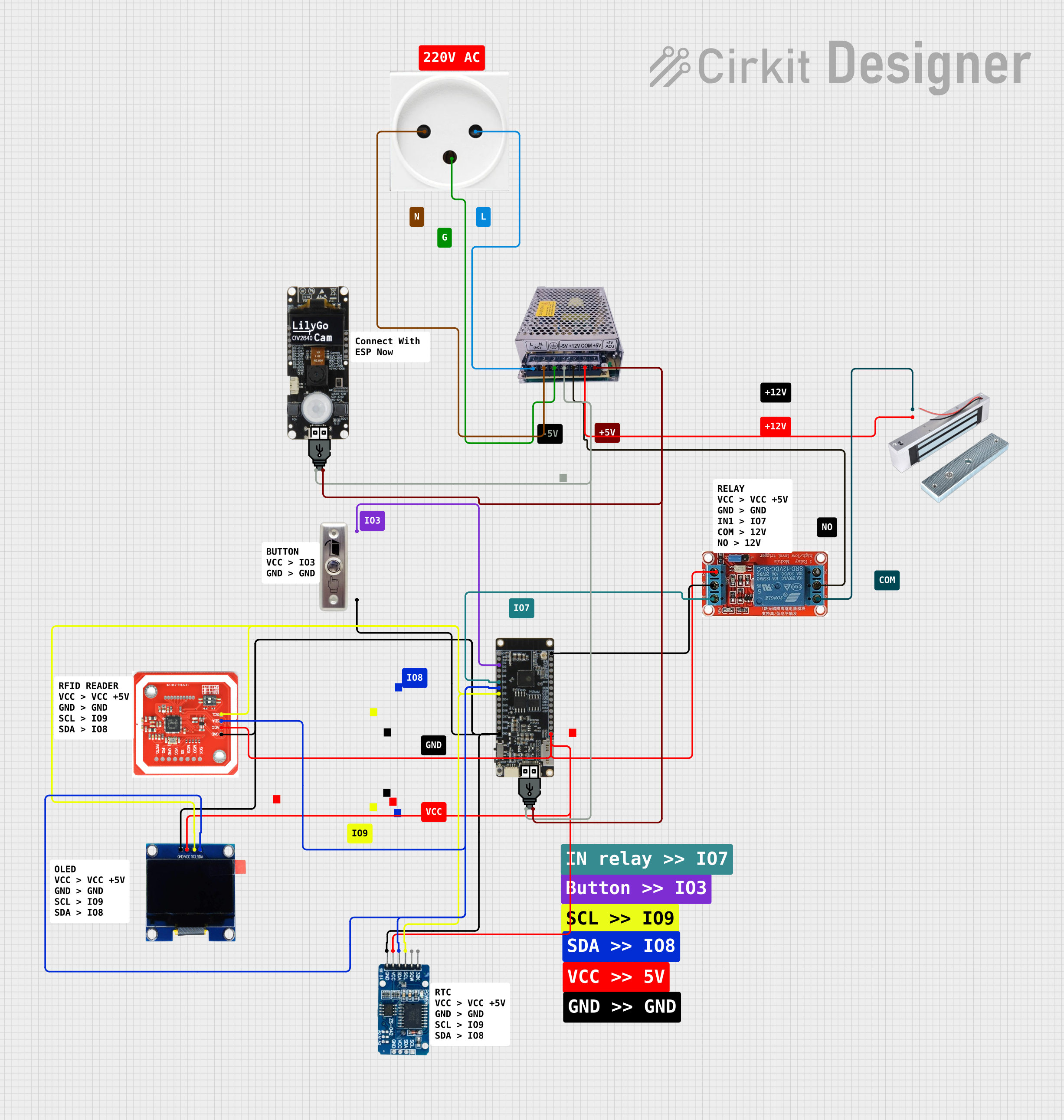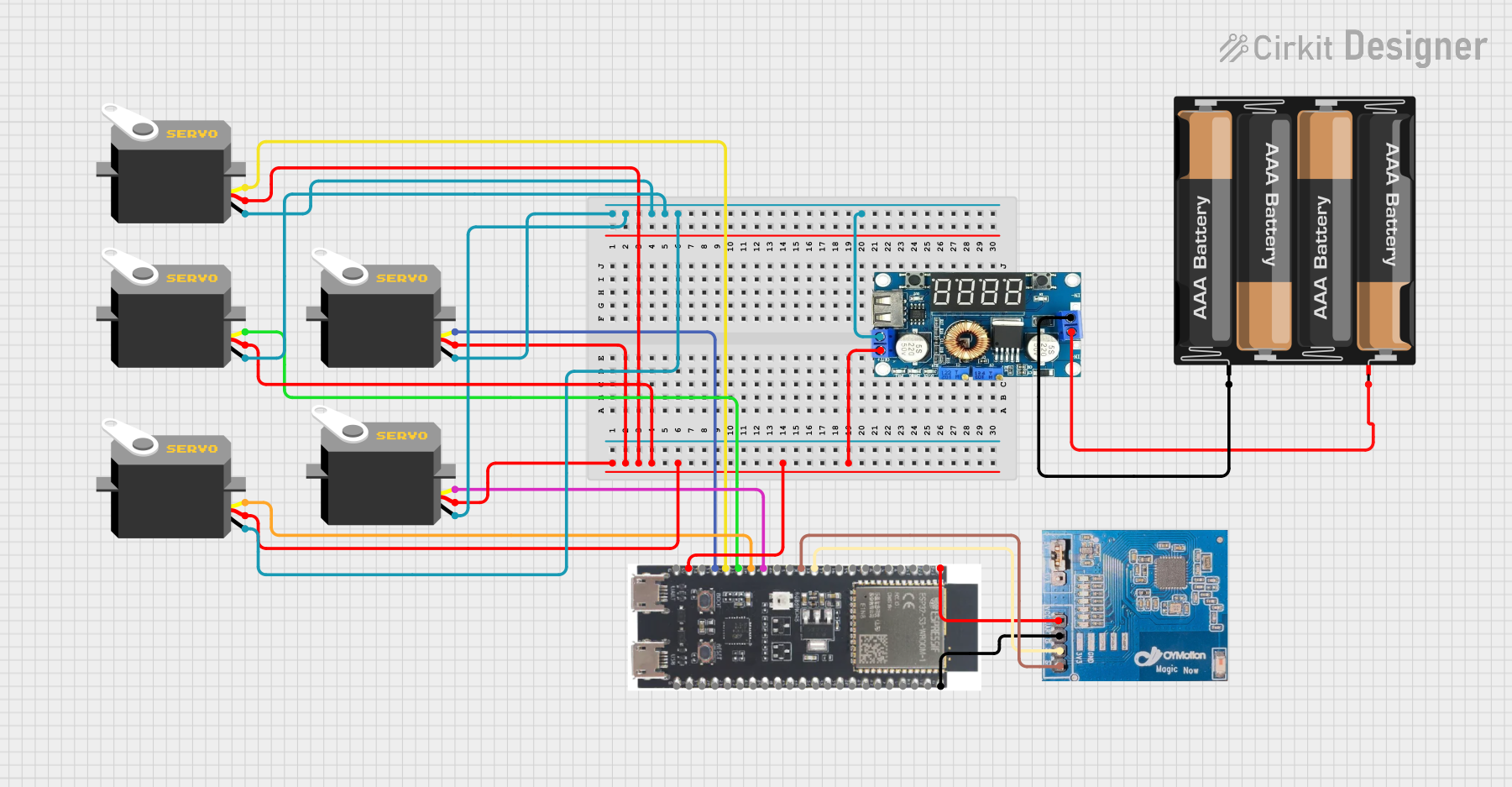
How to Use REF-8S: Examples, Pinouts, and Specs

 Design with REF-8S in Cirkit Designer
Design with REF-8S in Cirkit DesignerIntroduction
The REF-8S, manufactured by RUET Electra Force, is a precision voltage reference designed to deliver a stable and accurate output voltage. With its low temperature drift and high reliability, the REF-8S is an essential component for applications requiring consistent voltage levels. It is particularly suited for high-accuracy analog systems, such as data acquisition, instrumentation, and precision measurement circuits.
Explore Projects Built with REF-8S

 Open Project in Cirkit Designer
Open Project in Cirkit Designer
 Open Project in Cirkit Designer
Open Project in Cirkit Designer
 Open Project in Cirkit Designer
Open Project in Cirkit Designer
 Open Project in Cirkit Designer
Open Project in Cirkit DesignerExplore Projects Built with REF-8S

 Open Project in Cirkit Designer
Open Project in Cirkit Designer
 Open Project in Cirkit Designer
Open Project in Cirkit Designer
 Open Project in Cirkit Designer
Open Project in Cirkit Designer
 Open Project in Cirkit Designer
Open Project in Cirkit DesignerCommon Applications and Use Cases
- Analog-to-digital converters (ADCs)
- Digital-to-analog converters (DACs)
- Precision measurement systems
- Industrial control systems
- Test and measurement equipment
- Calibration devices
Technical Specifications
The REF-8S is engineered to meet the demands of precision applications. Below are its key technical specifications:
| Parameter | Value |
|---|---|
| Output Voltage | 2.5 V, 3.3 V, or 5.0 V (varies by model) |
| Output Voltage Tolerance | ±0.05% |
| Temperature Coefficient | 10 ppm/°C (typical) |
| Supply Voltage Range | 3 V to 15 V |
| Supply Current | 1.2 mA (typical) |
| Output Current Capability | ±10 mA |
| Operating Temperature | -40°C to +125°C |
| Package Type | 8-pin SOIC |
Pin Configuration and Descriptions
The REF-8S is available in an 8-pin SOIC package. The pinout and descriptions are as follows:
| Pin Number | Pin Name | Description |
|---|---|---|
| 1 | VOUT | Precision voltage output |
| 2 | GND | Ground (0 V reference) |
| 3 | NC | No connection (leave unconnected) |
| 4 | NC | No connection (leave unconnected) |
| 5 | TRIM | Output voltage adjustment (optional) |
| 6 | NC | No connection (leave unconnected) |
| 7 | VIN | Input supply voltage |
| 8 | NC | No connection (leave unconnected) |
Usage Instructions
How to Use the REF-8S in a Circuit
- Power Supply: Connect the VIN pin (Pin 7) to a stable DC power source within the range of 3 V to 15 V. Ensure the power supply is free from noise to maintain the precision of the output voltage.
- Output Voltage: Connect the VOUT pin (Pin 1) to the load or circuit requiring a stable reference voltage. The output voltage will be 2.5 V, 3.3 V, or 5.0 V, depending on the specific REF-8S model.
- Ground Connection: Connect the GND pin (Pin 2) to the ground of the circuit.
- Optional Trimming: If fine-tuning of the output voltage is required, use the TRIM pin (Pin 5) with an appropriate resistor or potentiometer.
Important Considerations and Best Practices
- Bypass Capacitors: Place a 0.1 µF ceramic capacitor close to the VIN pin to filter out high-frequency noise. Additionally, a 10 µF electrolytic capacitor can be used for improved stability.
- Thermal Management: Ensure adequate ventilation or heat dissipation if the REF-8S is used in high-temperature environments.
- Avoid Overloading: Do not exceed the ±10 mA output current capability to prevent damage to the component.
- Unused Pins: Leave all NC (No Connection) pins unconnected to avoid interference.
Example: Using REF-8S with an Arduino UNO
The REF-8S can be used to provide a stable reference voltage for the ADC of an Arduino UNO. Below is an example circuit and code:
Circuit Connections
- Connect the REF-8S VOUT pin to the AREF pin of the Arduino UNO.
- Connect the REF-8S GND pin to the Arduino GND.
- Connect the REF-8S VIN pin to the Arduino 5V pin.
Arduino Code
// Example code to use REF-8S as an external reference for Arduino ADC
void setup() {
// Configure the ADC to use the external reference voltage
analogReference(EXTERNAL);
// Initialize serial communication for debugging
Serial.begin(9600);
}
void loop() {
// Read an analog value from pin A0
int sensorValue = analogRead(A0);
// Convert the ADC value to voltage (assuming REF-8S provides 2.5V reference)
float voltage = sensorValue * (2.5 / 1023.0);
// Print the voltage to the Serial Monitor
Serial.print("Voltage: ");
Serial.print(voltage);
Serial.println(" V");
// Wait for 1 second before the next reading
delay(1000);
}
Troubleshooting and FAQs
Common Issues and Solutions
No Output Voltage
- Cause: Incorrect power supply connection or insufficient input voltage.
- Solution: Verify that the VIN pin is connected to a stable DC voltage within the specified range (3 V to 15 V).
Output Voltage is Unstable
- Cause: Noise on the power supply line or insufficient bypass capacitance.
- Solution: Add a 0.1 µF ceramic capacitor and a 10 µF electrolytic capacitor close to the VIN pin.
Output Voltage is Incorrect
- Cause: Incorrect model of REF-8S or improper use of the TRIM pin.
- Solution: Check the model number to ensure the correct output voltage. If using the TRIM pin, verify the resistor or potentiometer value.
Component Overheating
- Cause: Excessive output current or high ambient temperature.
- Solution: Ensure the load does not exceed the ±10 mA output current limit. Improve ventilation or use a heatsink if necessary.
FAQs
Q1: Can the REF-8S be used with a 3.3 V power supply?
A1: Yes, the REF-8S operates with input voltages as low as 3 V. Ensure the output voltage model matches your requirements.
Q2: What happens if the TRIM pin is left unconnected?
A2: If the TRIM pin is left unconnected, the REF-8S will output its default precision voltage without any adjustment.
Q3: Can the REF-8S drive multiple loads simultaneously?
A3: Yes, as long as the total current drawn does not exceed the ±10 mA output current capability.
Q4: Is the REF-8S suitable for battery-powered applications?
A4: Yes, its low supply current (1.2 mA typical) makes it suitable for battery-powered systems.